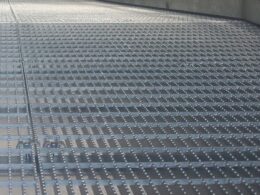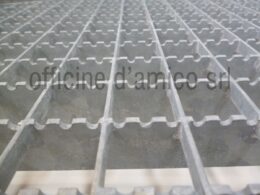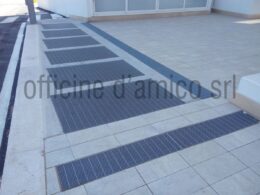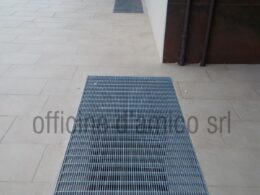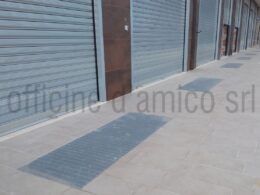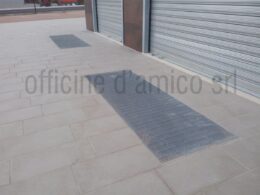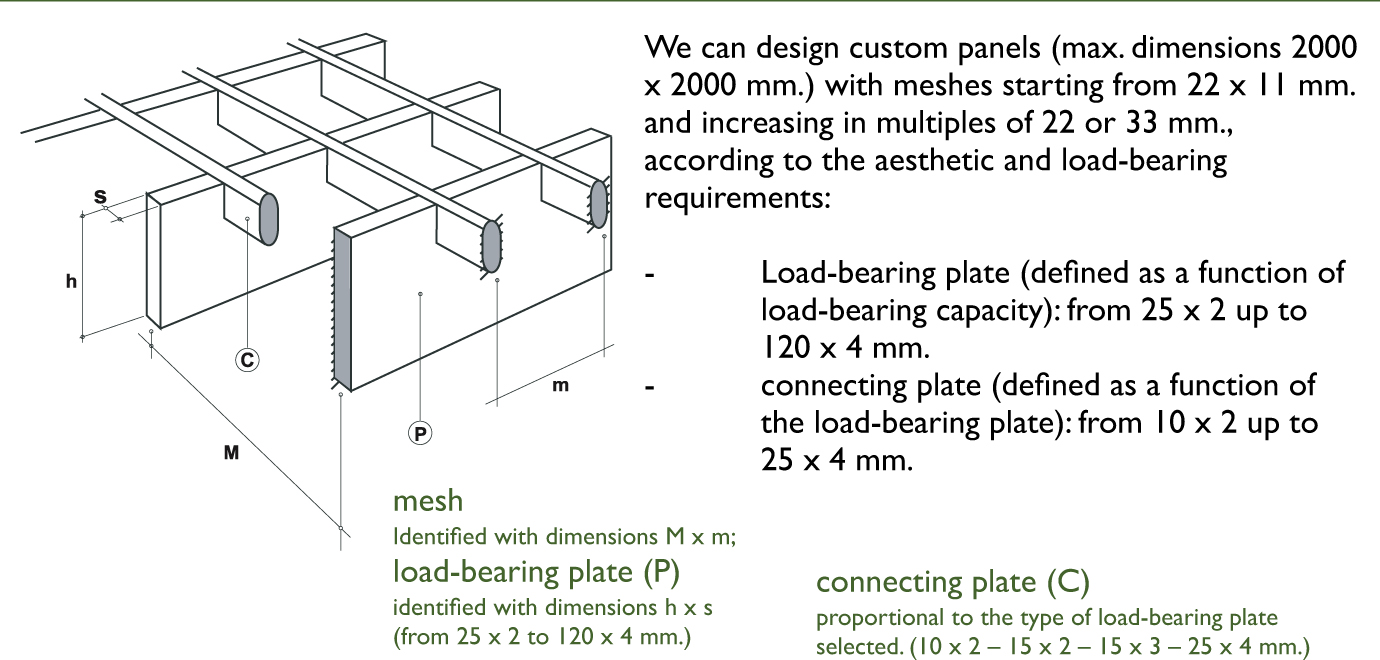Our gratings comply with the regulations defined by ASSOGRIGLIATI, the Italian National Association of Steel and Metal Alloy Welded or Pressed Grating Manufacturers. The applicable regulations as of August 2002 include the UNI regulations for electro-welded / pressed gratings:
– UNI 11002-1: Panels and steps formed of welded or pressed gratings, terminology, tolerances, requirements and testing methods for panels for applications in pedestrian or vehicle-accessible applications.
– UNI 11002-2: Panels and steps formed of welded or pressed gratings, terminology, tolerances, requirements and testing methods for steps.
UNI 11002-3: Panels and steps formed of welded or pressed gratings. Sampling and criteria for acceptance of panels for use in pedestrianized areas, vehicle-accessible areas, and steps. .
Technical selection criteria for grating panels:
– Use of capacity tables, “collaborating bars” method;
– Use and intallation of grating panels (survey of site, installation of the panels, setting of the gratings, pedestrian gratings, empty/full relationship of grating panels, break beams, trolleys and forks);
– Criteria for dimensions of grating steps for public stairwells (loads acting on the steps, collaborating bars, restrictions on bolted steps etc.).
Class 1: small crowds
Class 2: automobiles
Class 3: LGVs
Class 4: HGVs / artics
Industrial manufacturing process
The manufacturing process involves forcing the transverse plates into slots cut into the load-bearing plates by applyng very high pressure. The loading plates are arranged paranged parallel to each other in one of the comb stamps fitted to the press. The transverse plates are then aligned with the notches cut for them in the load-bearing plates by two belt shears and forced, by a high-pressure press, into the notches.
This forms a reticular structure of high solidity, robustness and resistance, with optimal load spreading.
Declaration of compliance with UNI CEI EN 45014 regulations
Our products come with a declaration of compliance that describes the materials used, the galvanization, and the referenced UNI regulations

